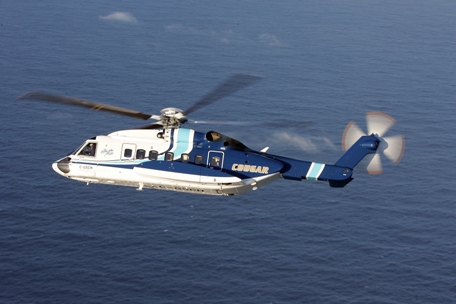Searchers have located the fuselage and detached tail boom of the Cougar Helicopters S-92A that crashed en route to oil fields off the coast of Newfoundland Thursday morning with 18 on board, minutes after pilots reported main gearbox oil pressure troubles and turned back toward land.
Teams using a remote controlled underwater device observed 10-13 bodies in the submerged main cabin, which was located at a depth of 120m (394ft) at the crash site, 35nm (65km) south southeast of the St. Johns International Airport, home base for Cougar Helicopters. Attempts to raise the wreckage have been delayed until the bodies can be removed.
 ©Cougar
©Cougar
One man who was rescued from water Thursday morning remains in critical condition. Of the 17 others on board, two bodies had been recovered as of Sunday afternoon.
Pilots of the 19-seat twin-engine heavy helicopter reported oil pressure problems with the aircraft’s main gearbox, declared an emergency and asked to return to St. Johns, according to preliminary report by Transport Canada. The aircraft's two GE CT7-8A turboshaft engines connect to the main gearbox, which in turn drives the main and tail rotors.
A review of service difficulty reports for the S-92A in the US and Canada since late 2006 reveal instances in which main gearbox oil pressure readings had dropped into precautionary ranges, or where oil had leaked from the gearbox due to mechanical issues.
Two US Federal Aviation Administration airworthiness directives, one in 2006 and one in 2005, addressed several main gearbox mechanical flaws. –ends-
Source: FlightGlobal.com
















